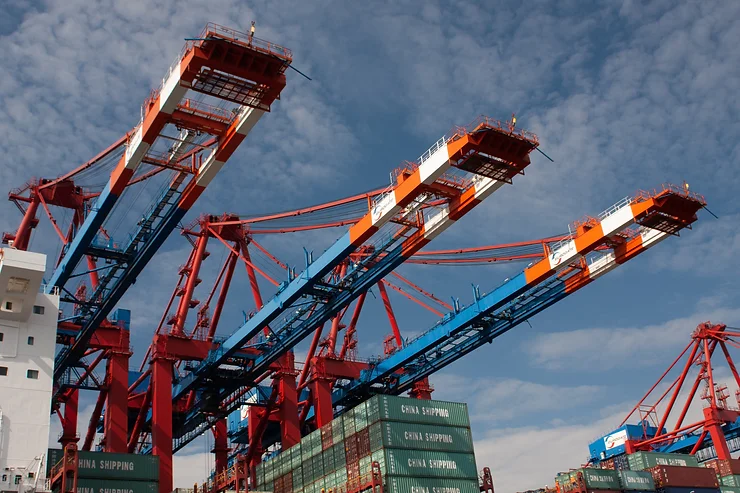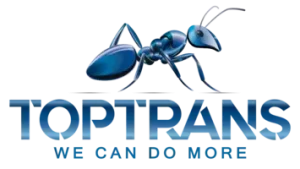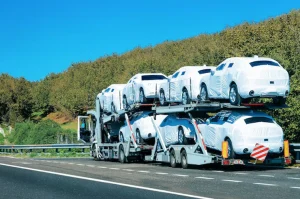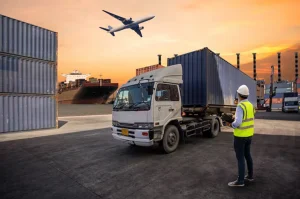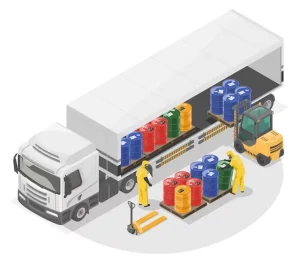Logistics, the backbone of global trade, has undergone a remarkable transformation with the integration of technology. Among the critical components of this evolution is the modernization of freight forwarding systems. These systems, responsible for orchestrating the movement of goods from point A to point B, have embraced technological advancements to streamline operations, enhance efficiency, and ensure smoother cargo management.
Let’s delve into the key aspects of this tech-driven evolution:
1. Automation in Operations
-
Digitization of Documentation: Paper-based processes have shifted to digital platforms, reducing errors and expediting paperwork such as bills of lading and customs documentation.
-
Automated Workflow Management: Systems now automate tasks like route optimization, load planning, and scheduling, improving operational efficiency and minimizing delays.
2. Enhanced Visibility and Tracking
-
Real-Time Tracking: GPS and RFID technologies provide precise cargo location tracking, offering real-time visibility to both shippers and customers.
-
Data Analytics: Analyzing tracking data enables better decision-making, forecasting, and proactive issue resolution, enhancing overall supply chain visibility.
3. Integration of IoT and Sensor Technology
-
Smart Cargo Solutions: IoT sensors monitor cargo conditions (like temperature, humidity, and pressure), ensuring compliance with handling requirements, especially for sensitive goods.
-
Predictive Maintenance: Sensors on vehicles and equipment detect potential issues, allowing preemptive maintenance, reducing downtime, and ensuring smoother operations.
4. Blockchain in Logistics
-
Transparent and Secure Transactions: Blockchain technology ensures transparency and security in transactions, enabling seamless and trustworthy documentation and payment processes.
-
Immutable Records: Smart contracts and decentralized ledgers facilitate trust between multiple parties involved in the logistics chain.
5. AI and Machine Learning Applications
-
Demand Forecasting: AI algorithms analyze historical data to predict demand patterns, enabling better inventory management and resource allocation.
-
Risk Management: Machine learning models assess risks in supply chains, predicting potential disruptions and allowing for proactive risk mitigation strategies.
6. Cloud-Based Platforms
-
Scalability and Accessibility: Cloud-based systems offer scalability, allowing for easy integration with other platforms, and accessibility across different locations.
-
Collaboration and Communication: Enhanced collaboration among stakeholders through cloud-based systems fosters smoother communication and information sharing.
7. Customer-Centric Solutions
-
Customized Dashboards: Systems provide personalized dashboards and analytics for clients, allowing them to track shipments and access relevant data seamlessly.
-
Responsive Customer Service: Integration of technology allows for quicker responses to customer queries and concerns, improving overall service quality.
The evolution of freight forwarding systems through technological integration has revolutionized the logistics landscape. From enhancing operational efficiency to offering greater transparency and customer-centric solutions, these advancements have reshaped the industry. Embracing these innovations will continue to be crucial for logistics companies aiming to stay competitive and meet the dynamic demands of the global market.
Understanding TopTrans
At the forefront of international cargo transportation for seven years, TopTrans boasts a comprehensive suite of services encompassing land, sea, air, and rail transport, coupled with customs and brokerage solutions. This extensive experience underscores our commitment to quality, reliability, and expedited shipping at competitive rates.
Tech Integration: Enhancing Operations
TopTrans leverages cutting-edge technology to streamline operations, ensuring optimal efficiency and reliability.
Advanced Tracking Systems and IoT Implementation
TopTrans integrates advanced tracking systems coupled with IoT (Internet of Things) technology. This combination offers real-time monitoring, enabling precise cargo tracking throughout the journey and providing clients with comprehensive visibility and control.
AI-Driven Predictive Analytics for Optimized Routes
By harnessing AI-driven predictive analytics, TopTrans identifies the most efficient routes, considering various factors like weather, traffic, and historical data. This predictive approach optimizes routes by minimizing transit time and maximizing efficiency.
Automation for Seamless Documentation and Processes
Automation plays a pivotal role in TopTrans’ operations, streamlining documentation processes and operational workflows. Automated systems facilitate faster processing, reducing human error, and ensuring seamless operations.
A Diverse Range of Services
TopTrans prides itself on its multifaceted services catering to various transportation needs. From land to sea and air to rail, we ensure the safe and timely delivery of diverse cargo types, including sensitive shipments like hazardous and military goods.
Customized Solutions
Recognizing the uniqueness of every cargo, TopTrans crafts tailor-made solutions to suit individual characteristics, routes, and additional service requirements.
Navigating TopTrans’ Logistics Network
TopTrans operates across diverse directions, including Georgia, the European Union, Turkey, the Central Asian States, Ukraine, and China.
Benefits of Partnering with TopTrans
Businesses seeking reliable logistics solutions find TopTrans an ideal partner due to our commitment to safe, efficient, and timely deliveries. Our adaptable services cater to varied industry needs.
In conclusion, TopTrans emerges as not just a freight forwarding company but a trailblazer in technological integration, setting new standards and benchmarks in the ever-evolving landscape of logistics.

